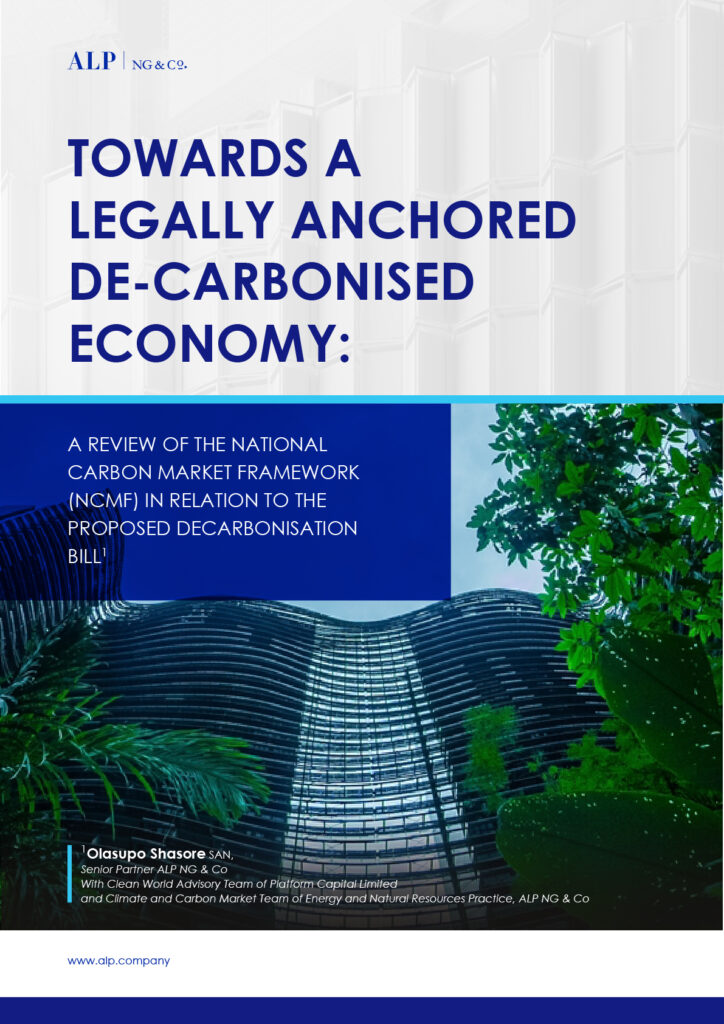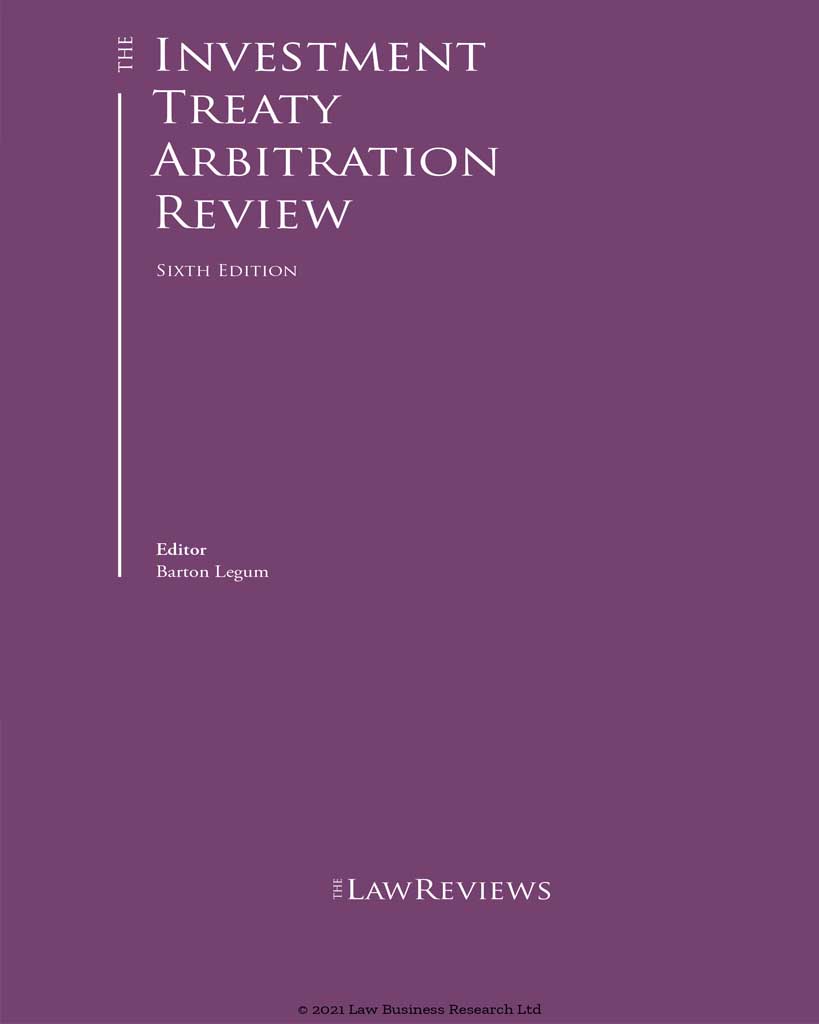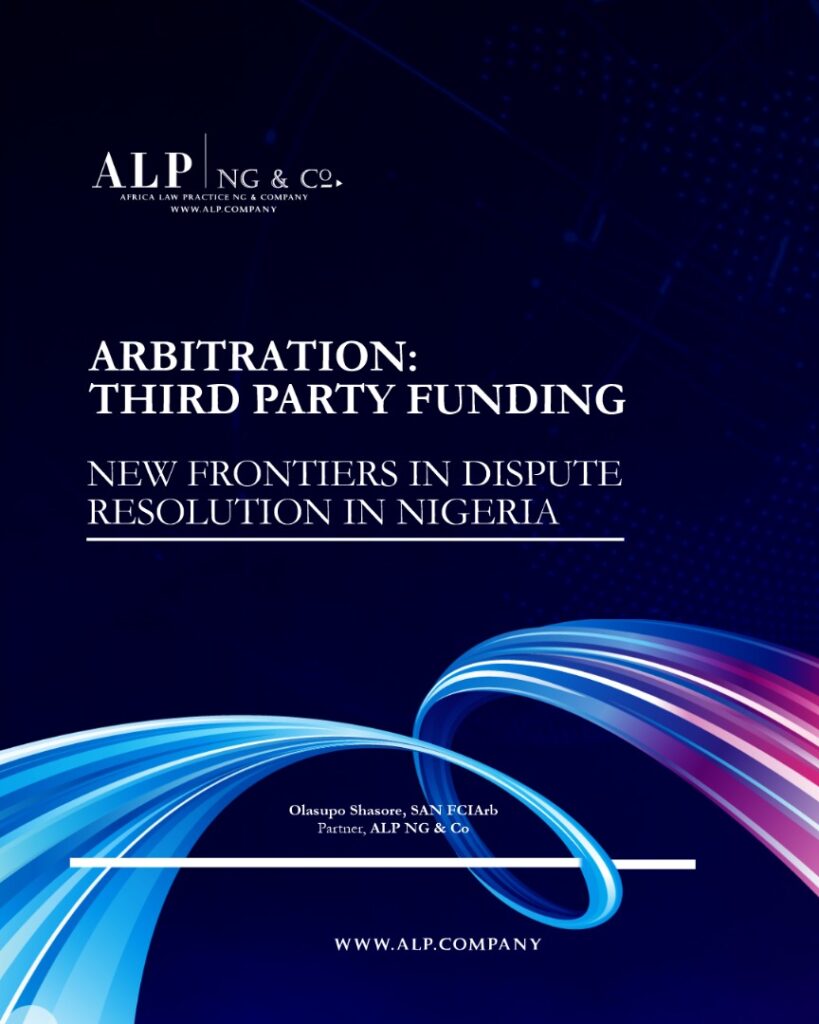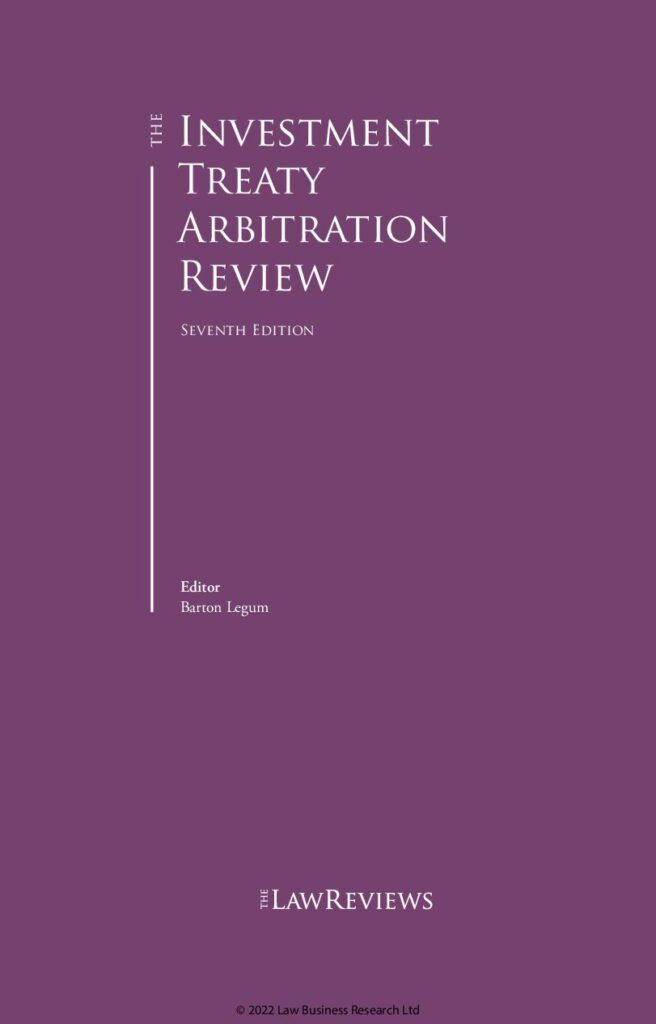
Towards A Legally Anchored De-Carbonised Economy: A Review of the National Carbon Market Framework (NCMF) in Relation to the Proposed Decarbonisation Bill
Context and Commendable Progress
The signing of the Nigeria’s National Carbon Market Framework (NCMF) 2024 is a welcome development operationalising the 2021 Climate Change Act. It situates Nigeria within the framework of Article 6 of the Paris Agreement and the Voluntary Carbon Market (VCM), outlining plans for institutional architecture, fiscal incentives, ownership rules, and benefit-sharing mechanisms. This reflects a deliberate shift from abstract policy aspirations to market-oriented climate governance intended to monetise emissions reductions while advancing sustainable development goals.
The NCMF also articulates a forward-looking vision: to generate up to 124.7 MtCO₂e of reductions and attract $2.5 billion in market value by 2030. In doing so, Nigeria signals to investors and international partners that it seeks to move beyond donor-dependent climate finance and toward self-sustaining green capital markets. However, these ambitions, however, are largely conceptual and policy-driven, not yet anchored in legally enforceable structures.

INVESTOR–STATE ARBITRATION AND THE ‘NEXT GENERATION’ OF INVESTMENT TREATIES
Introduction
Investor–state arbitration has grown over the years to become one of the most dynamic and controversial features of international investment law. Across the world, most states have entered into at least one International Investment Agreement (IIA) to promote and protect investments within their territories. From its days of humble beginnings, when the first Bilateral Investment Treaty (BIT) was executed between West Germany and Pakistanin 1959,2 to the present day, which is characterised by a multi-layered and multifaceted IIA regime featuring more than 3,300 known IIAs3, investor–state arbitration has come along way.
In line with one of the core objectives of IIAs, which is the promotion and protection of foreign investments, a mechanism emerged for the direct invocation of arbitration claims by investors against the host state.4 That mechanism is investor–state dispute settlement (ISDS),the most widely used ISDS mechanism is investor–state arbitration5. In recent times, however, the ISDS system has attracted increasing backlash and become the subject of debate in the investment community and the general public, with many advocating that it be scrapped altogether.6 The widespread sentiment among policymakers and states is that the adoption of investor–state arbitration as an ISDS mechanism has not succeeded in fostering a balance between promoting and facilitating investments or investor protection on the one hand, and ensuring responsible investment, safeguarding the right to regulate, or protecting the public interest of the host state on the other hand. The latest decisions from ISDS tribunals appear to provide statistical support to this sentiment.
A report published by the United Nations Commission on Trade and Development
(UNCTAD) reveals that by the end of 2019, about 61 per cent of ISDS tribunal merit-based

ALP NG & Co. Model Arbitration Clause
Introduction
An arbitration agreement [AA] is the foundation stone of commercial arbitration. This is because the AA records the consent of the parties to submit a dispute to arbitration and as a general rule, there can be no arbitration between parties who have not first agreed to resolve their dispute(s) through arbitration. Thus, unlike national courts which derive their jurisdiction from the Constitution and/or the statute creating the courts or from parties’ jurisdiction agreement, the jurisdiction of arbitration tribunals derives solely from the agreement of the parties to submit their existing or future disputes to arbitration.
Article II (1) of the New York Convention 1958 [NYC] refers to an agreement to arbitrate as including,
((an agreement in writing under which the parties undertake to submit to arbitration all or al!Y differences which have arisen between
them in respect if a defined legal relationship, whether contractual or not))
while Article 7(1) of the UNCITRAL Model Law defines AA in the following words,
((an agreement ry the parties to submit all or certain disputes which have arisen, or which may arise between them in respect if a
defined legal relationship, whether contractual or not. An arbitration agreement may be in the form if an arbitration dause in a contract or in the form if a separate agreement. ,,
Most national arbitration legislations have adopted definitions of AA that significantly borrow from the NYC and Model Law. For instance, the English Arbitration Act 1996 in section 6(1) refers to “an agreement to submit to arbitration present or future disputes (whether they are contractual or not)” while Section 2 of the United States’ Federal Arbitration Act refers to “a written provision … to settle by arbitration a controversy thereafter arising out of [a] contract or transaction, or … an agreement to submit to arbitration an existing controversy.” The Nigerian Arbitration and Conciliation Act 1988 [ACA] does not contain a definition of AA but the Act, in section 1, prescribes the forms which an AA may take.

AfCFTA - Strengthening Africa’s Trade Capacity
Introduction
The cost of arbitration proceedings has remained one of the major deterrents for parties seeking to resolve commercial disputes. While this cost can vary significantly depending on various factors such as complexity of the dispute, the jurisdiction, and the arbitral institution, it comprises of legal fees, expert fees, cost of procuring witnesses, arbitrator fees and administrative expenses. This has been a challenge for certain parties who may be deterred by the burgeoning cost of the arbitration process. The Arbitration and Mediation Act 2023 (AMA) has introduced the practice of third-party funding (‘TPF’) to Nigeria’s arbitration landscape, as a modern means of managing the cost of, thereby increasing the access to arbitral remedies.
This article discusses the current position of third-par ty funding in Nigeria, the practicality of TPF in Nigeria, the concerns that may arise with the adoption of third party funding and how to address these concerns.

Arbitration: Third Party Funding New Frontiers In Dispute Resolution In Nigeria
Introduction
Historically, Africa has always been known for its ancient trade routes that criss-crossed the continent promoting commerce, ensuring political interaction and of course sometimes resulting in war. The emergence of sea travel and cross ocean movement and trade played a significant part in diminishing traditional internal trade amongst African nations. With present-day focus on the digital and knowledge economy, including the drive to bridge Africa’s so called infrastructure and technological gap, free trade movement still unfortunately occupies the back seat.
Intermediately, in 1980 the then Organisation of African Unity (‘OAU’) the precursor of the African Union (AU) concluded the ‘Lagos Plan of Action’ for Economic Development of Africa 1980-2000 in which it proposed a regional development plan that conceived and included an ‘African Common Market’.
The next stepping stone was the 1991 Abuja Treaty establishing an African Economic Community in pursuit of Art. 3 of the AU statute objective in ‘accelerating the political, socio-economic integration of the continent’.
And so, when the 18th Ordinary Session of the Assembly of Heads of State and Government (HOSG) of the African Union met in Addis Ababa in 2012, they came to the decision that a Continental Free Trade Area would be formed in Africa and endorsed the Action Plan on Boosting Intra-Africa Trade (BIAT). It was the most significant moment in securing the future of African adherence to the Treaty obligations – almost a promise to re-enact in modern terms, the ancient trade routes.

Investor–State Arbitration and The ‘Next Generation’ Of Investment Treaties 7th Edition
Introduction
Investor–state arbitration has grown over the years to become one of the most dynamic and controversial features of international investment law. Across the world, most states have entered into at least one International Investment Agreement (IIA) to promote and protect investments within their territories. From its days of humble beginnings, when the first Bilateral Investment Treaty (BIT) was executed between West Germany and Pakistan in 1959, to the present day, which is characterised by a multi-layered and multifaceted IIA regime featuring more than 3,300 known IIAs, investor–state arbitration has come a long way.
The chapter analyses the current framework regulating investor–state arbitration. It begins with a consideration of the areas of key stakeholders’ concerns with the ISDS regime by highlighting select ISDS decisions around topical areas in need of reform. Next, the chapter undertakes an overview of select BIT programmes.
Thereafter, we highlight recent reform measures aimed enhancing confidence in the stability of the investment environment – from procedural matters such as exhaustion of local dispute resolution framework as a prerequisite to investor–state arbitration to substantive matters such as the host state’s rights to legislate freely around FET requirements, etc. The chapter concludes with policy recommendations for policymakers in future IIAs.
